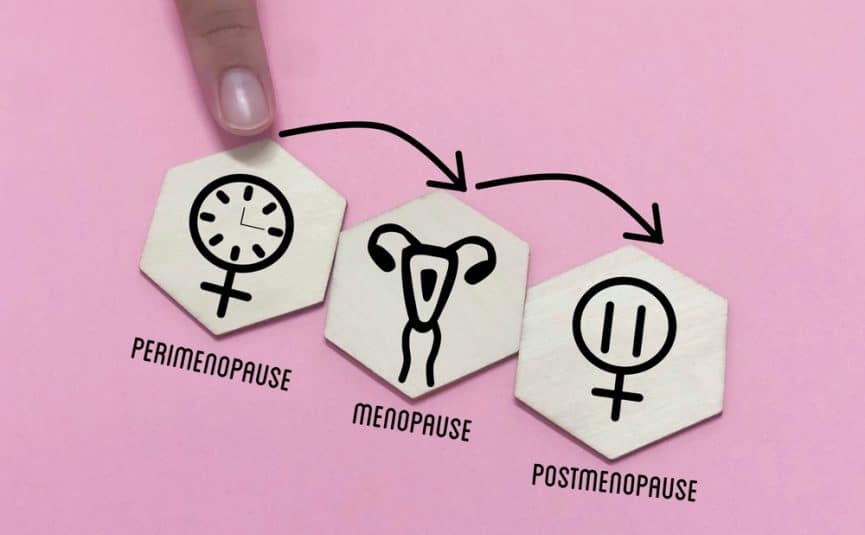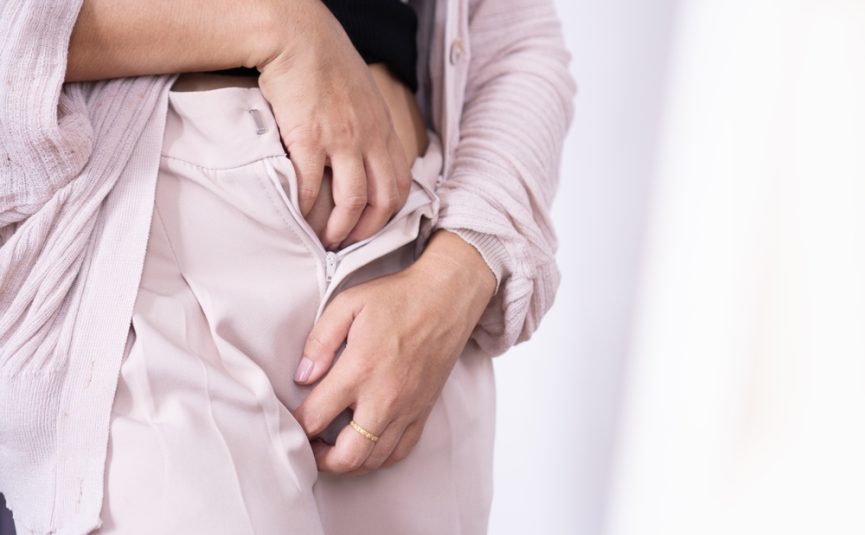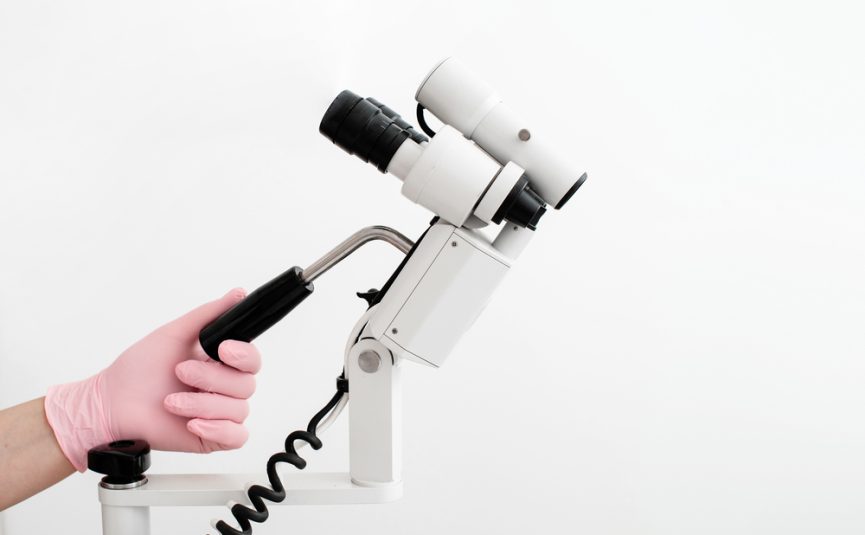East Melbourne VIC 3002
Common Causes for Vulval and Vaginal Burning & Itchiness

There are several common causes of vaginal itching, burning, and irritation, including infections, irritants, menopause, skin disorders, shaving and or waxing, as well as sexually transmitted diseases. In most cases, the symptoms are particularly unpleasant and substantially interfere with the patient’s quality of life.
Depending on the cause and severity of the symptoms, they may be short-lived and only last a matter of hours or may even last a couple of weeks or months. To solve these symptoms, it’s vital that an accurate diagnosis be made to determine an exact cause for these issues and to then treat the underlying problem.
Why Is My Vagina Itchy?
Why is my vagina itchy? A common question among women that has various explanations. We’ve listed the most common causes of vaginal irritation below.
Bacterial Vaginosis
Bacterial vaginosis is the commonest vaginal infection in women post-puberty and pre-menopause. The exact cause of bacterial vaginosis is unknown but what we do know is that it is due to an overgrowth of germs that exist normally in the vagina called anaerobes. These are germs that do not require oxygen for their multiplication and are counteracted by the healthy germs within the vagina called lactobacilli. Lactobacilli prevents the multiplication of an abnormal number of anaerobes within the vagina and prevents the symptoms of bacterial vaginosis.
Bacterial vaginosis results in the acidity of the vagina being reduced. Usually, the vagina is acidic due to the release of acidic discharge associated with lactobacilli. If the vagina becomes more alkaline this promotes the growth of anaerobes and can result in bacterial vaginosis.
Bacterial vaginosis results in unpleasant symptoms, primarily excess discharge which often has a fishy odour and the discharge itself can be irritating when it contacts the vulval skin. Though thankfully, bacterial vaginosis is primarily treated because of the unpleasant symptoms that can be associated with it, as it’s not harmful to the body in any other way.
How To Treat Bacterial Vaginosis
The exact treatment of bacterial vaginosis involves the use of a specific antibiotic called metronidazole. It can also be treated using a cream called clindamycin – though it’s important to realise that the use of vaginal or oral probiotics have been shown to be ineffective. Lowering the pH or making the vagina more acidic with a gel called Aci-Jel is also a legitimate treatment for bacterial vaginosis.
Recurrent bacterial vaginosis may require prolonged treatment and maintenance therapy and it is important to discuss this with your doctor.
Urinary Tract Infections (UTIs)
Urinary tract infections are most commonly associated with pain, irritation and burning on passing urine.
The commonest urinary tract infection in women involves an infection within the bladder also known as cystitis. This is an infection often acquired by germs that live in the bowel extending up to the vagina and then the urethra and from there up into the bladder. For that reason, the commonest urinary tract infection in a woman is due to E.coli, a common bowel organism.
Urinary tract infections can be exacerbated in patients who have had to have a catheter or tube to pass urine, have had other generalised diseases or have acquired the infection related to having intercourse or being postmenopausal. The base of the bladder or trigone is made up of oestrogen dependent mucosa or lining tissue which can be affected by being postmenopausal.
Simple cystitis or infection of the bladder can become more complicated if the organism involved travels up the ureter to the kidneys or more rarely enters the bloodstream and causes a condition called septicaemia or blood poisoning.
How To Treat UTIs
It is important in all cases of cystitis to get midstream urine to elucidate the actual organism involved and the laboratory will tell us what antibiotic kills that particular organism. The problem is that these organisms are becoming increasingly resistant to antibiotics, which is why a great deal of care is needed to choose an antibiotic that has a low incidence of side effects but is effective in eradicating the organism.
Occasionally urinary tract infections are recurrent, especially those associated with menopause or intercourse and in this case, it may be important to get an ultrasound or another x-ray procedure performed to outline the kidneys and bladder to ensure that there are no abnormalities leading to recurrent urinary tract infections.
These abnormalities include:
- Kidney stones
- Scarring to the kidneys
- Congenital abnormalities of the urinary tract system
Some patients require prophylaxis or prevention which may involve taking an antibiotic every evening.
Yeast infections (vaginal candidiasis)
Somewhere between 50-60% of all women will have at least one episode of thrush during their lifetime. Common symptoms associated with thrush include:
- Soreness
- Itchiness within the vagina and/or vulva
- Thick paste like discharge
- Redness or soreness around the vulva
- Discomfort during intercourse
- Small white spots on the vulva or within the vagina
10% of cases of thrush are not due to Candida Albicans but are due to other Candida species. One of these and the most common is called Candida Glabrata often associated with a thin grey discharge, which is often associated with symptoms of vaginal irritation or discomfort.
How To Treat Thrush
Common thrush or Candida Albicans is effectively treated by using over-the-counter preparations. It is often useful to use oral fluconazole of one 150 mg tablet together with a course of Clotrimazole pessaries or Clotrimazole cream to the vagina. If you have vulval skin thrush, then the combination of Clotrimazole with hydrocortisone used twice a day for at least one week will be extremely effective.
Rarer forms of thrush such as Candida Glabrata often require more specialised treatment and do not respond to the usual treatment that you get over-the-counter for Candida Albicans. For these cases, the most effective treatment is to use boric acid pessaries 600 mg, every night for 3 weeks. Some women have recurrent thrush and if this is the case, then long term oral treatment with fluconazole in a low dose of 50 mg for up to 6 months every single day is an effective way of preventing thrush infections.
Vulvar Lichen Sclerosis
Vulvar Lichen Sclerosis is an inflammatory skin disorder of the vulva associated with severe inflammation, thinning of the skin and other painful symptoms including itching, burning and pain.
The exact cause of vulvar lichen sclerosis is unknown but it is thought possibly to have an immune basis that can be commonly associated with other autoimmune diseases such as thyroid disorders. Although lichen sclerosis can theoretically occur on any area of the skin, over 95% of cases occur in the genital region. It has an incidence of about 2% of all women and can occur in women of all ages including children but the peak age group is in the early menopausal years in the 50-60-year-old age group.
The importance of lichen sclerosis is the fact that approximately 5% of women with active lichen sclerosis may go on to develop VIN (vulval intraepithelial neoplasia), a significant precancerous condition which needs to be diagnosed and treated to avoid carcinoma of the vulva.
How to Treat Lichen Sclerosis
The most effective treatment for active lichen sclerosis is the use of clobetasol, a super potent steroid that is usually made up in a compounding pharmacy at a strength of 0.05% and is used every night. If the disease comes into remission, then it is best to continue using clobetasol once or twice a week as maintenance to prevent further flare-ups.
Weaker corticosteroids can be used if the condition becomes under control. The use of corticosteroid treatment not only reduces the inflammation associated with lichen sclerosis but it prevents the complications of fusion of skin and resorption of skin.
Vulvar lichen planus
Vulvar lichen planus is an inflammatory skin disorder involving the vulval area +/- the vagina. It occurs elsewhere on the skin and it is quite uncommon on the vulva. There are a number of types of lichen planus but the common type is called erosive lichen planus.
Erosive lichen planus can lead to extensive skin damage and as such, can be associated with vulval pain and burning which can be severe. Vulvar lichen planus probably occurs in about 1% of women and lichen planus as a disease can occur on any skin surface including the mouth.
As with lichen sclerosis, vulvar lichen planus is thought to be an autoimmune disease and a full autoimmune screen should be arranged for the patient to exclude other autoimmune disorders.
How to Treat Lichen Planus
There have been a number of studies showing super potent steroids such as clobetasol 0.05% that have shown to be effective in the treatment of vulvar lichen planus. If the vagina is also involved 10% hydrocortisone cream with an applicator can also be compounded for use on a nightly basis.
Maintenance therapy is often necessary to avoid flare-ups which are quite common with lichen planus – this involves the use of maintenance corticosteroids twice a week.
Second-line therapy is tacrolimus as a cream. This is an alternative therapy that has been shown to be quite effective. This cream has immunosuppressive properties. A disease that is showing resistance to the usual topical therapy may require oral immunosuppression. This includes the use of prednisolone for 4-6 weeks or other medications that suppress the immune system such as mycophenolate or Plaquenil. There are a number of studies now using biological agents and we await the result of these studies to see if they may be useful.
Vulval dermatitis, eczema and lichen simplex chronicus
Vulval dermatitis and eczema are probably the commonest causes of vulvar itchiness and irritation in women when it occurs in the genital area. It is widely known that dermatitis and eczema can occur anywhere on the skin, including the genital area.
Contact dermatitis is a condition that causes the skin to become inflamed and red when in contact with an allergen or irritant, including certain deodorants and or soaps. In some cases, no precipitating cause is found and we don’t know why eczema or dermatitis has occurred in the first place. Women who have genital dermatitis or eczema often have red inflamed looking vulval skin which may also be scaly and dry.
The condition may be acute or be present for some time with intermittent exacerbations especially if a known irritant comes in contact with the skin repeatedly. Chronic scratching results in a thickening of the skin which is called lichen simplex chronicus.
How to Treat Vulvar Dermatitis, Eczema & Lichen Simplex Chronicus
The simple treatment is to avoid any known irritants such as soaps or deodorants and avoid washing the skin frequently. The best way to wash and moisturise the skin is to use plain aqueous cream that can be obtained at any chemist in 500 ml tubs.
Steroid ointments are also very effective and should be used twice a day and applied to the affected area. Treatment should be used for a minimum of two weeks and during any flare-ups that may occur. Often eczema and dermatitis respond very well to corticosteroid treatment, as well as gentle handling of the skin, including light cotton underwear and avoiding any irritants.
Pubic lice
Pubic lice (often referred to as crabs) are tiny insects (1.6 mm or less) that are found in the genital area/pubic hair. Pubic lice spread from direct skin to skin contact during sexual activity and more rarely after contact with bed linen, towels or underwear of an infected person. Pubic lice can sometimes be found in other body hair such as under the arms.
Symptoms of pubic lice include:
- Itching especially at night
- Lice and nits (eggs from the lice) can sometimes be seen on the pubic hair
- Specks of blood on your underwear
- Dark or blue spots on the skin where the lice are feeding
How to Treat Pubic Lice
Pubic lice can sometimes be difficult to eliminate or can reoccur so prompt effective treatment is necessary, see the below treatment methods:
- Treat yourself at home with an insecticidal lotion or cream that you can purchase over-the-counter at the pharmacy (Lyclear cream or Quellada lotion).
- Ensure that you follow the directions on the pack and apply the lotion/cream from your neck down to your feet. Do not apply the treatment to the hair on your head. Ensure that the cream/lotion is well applied especially on the perineum (which is the area between the vagina and anus).
- Make sure you wash all of your bedding, towels and clothing in hot water (50° Celsius).
- You may need to repeat the treatment if you are still symptomatic after 3-7 days in order to eliminate any newly hatched lice.
- You should avoid scratching the itchy areas as you may cause further irritation of the skin and this can lead to a bacterial skin infection. You may require an over-the-counter antihistamine that will reduce your need to scratch.
- Do not resume sexual activity until you have been treated. Ensure that you notify your sexual partner so they can seek treatment otherwise you may cause re-infestation to occur again.
Waxing or Shaving
Waxing/shaving your genital skin is not without side effects and complications. Most of these side effects are associated with pain and irritation and can even be associated with bruising, bleeding and infection. Shaving the genital area can result in cuts which can lead to bleeding and bruising, especially if an inappropriate or unhygienic device is used.
It is important to use a device that has been designed for women’s shaving, to take your time, and to be gentle during this process. If you’ve had complications in the past or you have a medical condition that affects the skin or makes your skin more fragile, then you should seek professional help. Some preparations that are used prior to shaving such as foams, soaps or gels can result in allergic dermatitis which can cause extreme itchiness of the genital area.
Waxing can be associated with chemical irritation such as eczema and dermatitis and can also be associated with folliculitis which is an infection that occurs in damaged hair follicles. If you’ve had vulvar and vaginal skin issues in the past, you should seek professional help.
Women with severe skin disorders such as lichen sclerosis or lichen planus are discouraged from waxing or shaving this area as the skin is very delicate and can be prone to damage.
Menopause
Menopause can be associated with a condition called genitourinary syndrome of menopause. This s due to the reduced oestrogen levels that are associated with menopause. Low oestrogen levels result in a loss of vaginal moistness and a thinning of the vaginal skin including the skin of the base of the bladder called the trigone. This lack of oestrogen can result in vaginal dryness, vaginal itch and burning discomfort.
Because the trigone or base of the bladder is also oestrogen deficient, the genitourinary syndrome can also result in urinary frequency and urgency and discomfort on passing urine.
How To Treat Menopause
Menopausal symptoms can be solved if the patient is suitable for systemic menopausal hormone therapy. Otherwise, local oestrogen creams used even twice per week indefinitely can make a significant improvement.
Chemical Irritants/Garments That Cause Vulvar Itching
Genital skin is particularly sensitive to chemical irritants. The key measure that patients can undertake to make themselves more comfortable when experiencing vulvar pain or itchiness includes:
- Soaps
- Deodorants
- Lubricants (some)
- Sanitary pads
- Tight clothing
- Synthetic underwear (If you have sensitive genital skin or a genital skin disorder, loose fitting cotton undergarments are the preferred option).
All of these irritants can result in eczema or dermatitis involving the genital skin. This can be extremely irritating and result in protracted itch and burning. For this reason it is important to avoid contact between these products and the genital skin.
Where contact is unavoidable, sometimes a thin barrier layer of Vaseline can be applied to act as a barrier and to avoid direct contact with the skin.
STDs That Cause Vaginal Burning & Itchiness
It is important to realise that any of the below sexually transmitted diseases can be associated with a burning vagina, burning on passing urine, or a vaginal or vulval itch and irritation.
It is important also to recognise the value of using protective therapy such as condoms in cases where the presence of a sexually transmitted disease is suspected. In all cases, the partner needs to be treated effectively and both partners need to be screened post-treatment to ensure that they have been cleared of disease and that the treatment has been effective.
The most common STDs to cause vaginal burning and itchiness include:
Chlamydia
Chlamydia is the most common sexually transmitted disease associated with bacteria. Most patients don’t show any symptoms at all but approximately 15-25% of women can notice a vaginal irritation or burn on passing urine due to an inflammation of the vagina or the urethra.
In some cases chlamydia can be associated with significant pelvic infection and resultant infertility, it is for this reason that it’s important Chlamydia be treated effectively. It is important that patients are also screened for other sexually transmitted diseases as often a number of these conditions coexist.
How to Treat Chlamydia
The most effective treatment for chlamydia is the use of tetracyclines such as doxycycline. The usual dose is 100 mg twice a day for one week and the patient’s partner should be treated and swabs should be taken following treatment to ensure that the treatment was effective.
Doxycycline is contraindicated in pregnancy because of its association with foetal abnormalities and in that case, an alternative safe antibiotic in pregnancy is azithromycin. However, this is a second choice treatment as a number of studies have shown that doxycycline is superior to the latter.
Genital Herpes
Genital herpes affects probably 12-25% of all sexually active men and women. It is due to the herpes simplex virus type 1 and type 2 but maybe underdiagnosed as a significant percentage of patients can have asymptomatic infections. Most but not all cases of genital herpes are caused by HSV-2. It is therefore a common sexually transmitted disease. The first infection or primary infection is often associated with severe symptoms associated with multiple ulcers in the genital region. Recurrent infections occurring at variable times may be triggered by stress or other infections and are usually of lesser severity and may only involve one or two small genital ulcers. These ulcers are often painful and are usually associated with burning over itchiness.
How to Treat Genital Herpes
The treatment of genital herpes is often done through antiviral therapy, which helps to reduce the duration of symptoms and the severity of symptoms. This treatment is especially useful in people who have frequent clinical recurrences and, in this case, antiviral therapy is used over a prolonged period of time. In the case of a primary attack the sooner the antiviral is used orally the more effective it will be in reducing the length of the attack and the severity of the attack.
Drugs such as acyclovir, famciclovir and valacyclovir can all be used as antiviral therapy. Women who have more than 12 attacks per year should consider going on long term prophylaxis using one of these antiviral therapies. This can have a significant impact on quality of life issues by substantially reducing the number of attacks.
It’s important to note, that the treatment of genital herpes may shorten the attack and reduce the severity of the attacks but does not prevent the primary attack from occurring in the first place.
Genital Warts
Genital warts are acquired by direct sexual contact, the warty growths however may not appear until some months after you have acquired the virus. These genital warts are often associated with symptoms of uncomfortable burning and itchy symptoms in the genital area.
Genital warts are caused by the HPV virus and there are numerous possible subtypes that can be associated with warty growths in the genital area, although subtypes 6 and 11 are detected the most. These viruses are sexually transmitted and although they can be associated with the development of vulval malignancy, the majority of cases are due to HPV 6 and 11 and the risk of malignancy with these subtypes is particularly low.
How To Treat Genital Warts
In cases where there are numerous and large warts, ablation of the warts is the ideal treatment often performed under anesthetic or local anesthetic in a case where the warts are not numerous. The warts can also be burnt off using electrocautery, lasered off or excised. In addition to this, there are a number of chemicals that can be applied to remove genital warts, (especially if the warts are small) including, trichloroacetic acid and podophyllum resin.
With regard to treatment, it is important to realise that spontaneous resolution can occur. It is important in patients with genital warts that the vagina is also examined because this is another common site for warts.
Trichomonas
Trichomonas is a genitourinary infection due to an organism called trichomonas vaginalis – It’s the most common STD worldwide.
The most common symptoms associated with Trichomonas include pus, thin watery discharge, itchiness, pain on voiding and a burning sensation within the vagina.
Bleeding after intercourse can also occur due to inflammation produced in the cervix.
How To Treat Trichomonas
Treatment is best undertaken with metronidazole, an antibiotic.
The diagnosis of Trichomonas is usually based on common symptoms and signs, though can also be diagnosed through laboratory testing by putting the organism under the microscope, as it has a characteristic appearance that can be detected using a rapid antigen test.
Neisseria Gonorrhoeae
Neisseria gonorrhoeae is a significant sexually transmitted disease that can be associated with severe pelvic infections. Its prevalence, unfortunately, appears to be increasing and infections can be associated with a disseminated disease which can result in heart and brain infections and significant morbidity.
The problem with these sexually transmitted organisms is that they often develop resistance to a number of commonly used antibiotics. The disease in women can often be associated with cervicitis, irritation or infection with the cervix that causes unusual vaginal discharge and frequent irritation. Symptoms can also include urethritis pain, discomfort during urination, and more seriously pelvic inflammatory disease.
How To Treat Neisseria Gonorrhoeae
The treatment of gonorrhea and its consequences has become more difficult with the emergence of antibiotic resistance. Very few of the newer varieties of Neisseria are sensitive to penicillin and so ceftriaxone is at present the most effective agent that we have. However, there is a decreased susceptibility to this drug and to azithromycin and the use of alternative drugs after sensitivity testing by the laboratory has become essential.
Any gynaecological issue that is interfering with your quality of life needs to be taken seriously. The number one aim of any gynaecological practice is to treat women holistically and by that we mean not concentrating on a single condition but thinking of the woman’s wellbeing overall.
It is also important to remember that some vulval skin disorders can be serious and if not treated adequately can result in chronic long-standing symptoms that become much more difficult to resolve. In some cases, this includes the development of precancerous skin lesions of the vulva, which need to be assessed at least 3 times a year. This is why aggressive early treatment is vital.
If you notice any changes with your condition you should alert your treating doctor and have your condition reviewed immediately.
With over 30 years experience in the field, Dr Len Kliman is highly regarded as one of Melbourne’s leading gynaecologists. He has vast experience in the diagnosis and treatment of a wide range of women’s gynaecological and vaginal issues and was recently appointed as an Associate Professor by the University of Melbourne Clinical School.
Get in touch with the clinic and speak to one of our highly-experienced nurses who are here to assist you with all of your gynaecological health needs.










